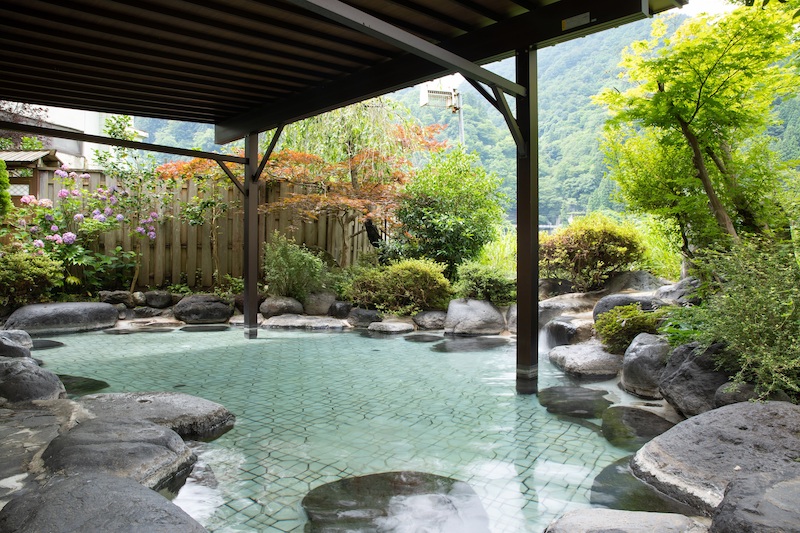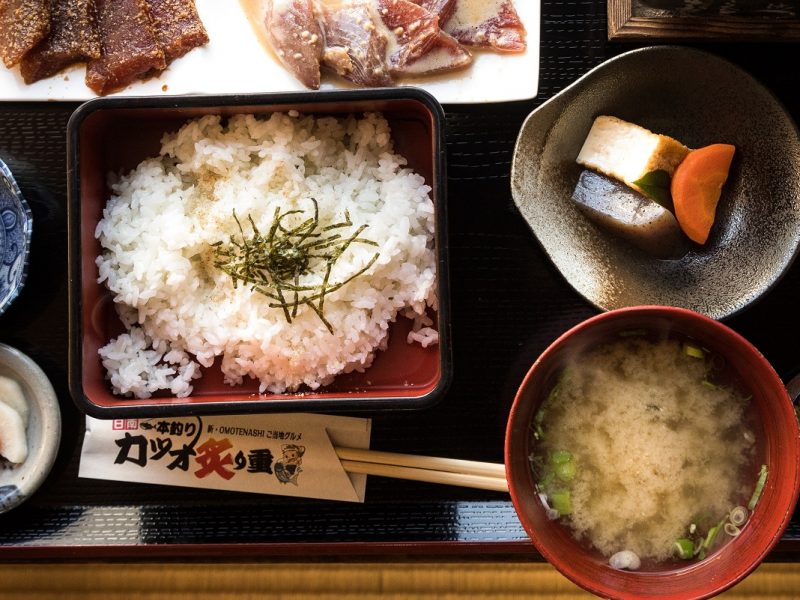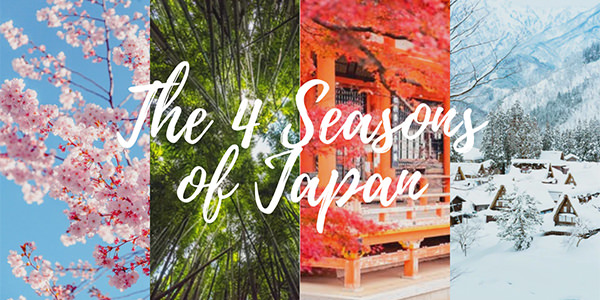Nestled around the Hida Mountains of central Japan, Chubusangaku National Park is a stretch of soaring alpine mountains and plains covered with lush nature, abundant wildlife, and culturally rich villages living in harmony with the encompassing ecosystems. While many visit in winter to ski, the warmer seasons likewise host a multitude of fun outdoor activities accommodating all lifestyles. This includes hiking, mountain biking, scenic train rides, hot spring hopping, historical sightseeing, feasts of local cuisine, and more! Read on for an all-encompassing 3-day Chubusangaku National Park itinerary to discover how to make the most of this extraordinary region!
Day 1: Norikura Kogen
Hiking in Norikura Kogen: Wander a Primeval Forest!
Norikura Kogen sits at the bottom end of Chubusangaku National Park just over an hour and 10-minute drive from Matsumoto Station. This expansive, mountainous region is famed for its extensive collection of hiking routes, biking trails, and hot springs naturally gushing out from underground, drawing in a wide range of travelers from all walks of life. One of the biggest highlights here is the primeval, virgin forest of “Genseirin no Mori,” which is chock full of birch and conifer trees that become engulfed with a thick tapestry of moss and fungi during the warmer months.
Some of the must-see locations within the forest include the dynamic Zengoro Falls, which is just 700-meters from the Norikura Kanko Center, along with the mirror-like reflection of the tranquil Ushidome Pond. Along the way, you’ll spot numerous metal stick-like contraptions hanging from the trees intended to be rung to scare off bears – don’t hesitate to give them a go!
GiFT NORiKURA Gelato & Cafe: Treat Yourself at a Sustainable Café

Norikura Goat’s milk and “Alps Blueberry” ice cream at GiFT NORiKURA Gelato & Cafe. Photo: Steve Csorgo
After hiking, stop by the Norikura Kanko Center to enjoy a coffee and bite at GiFT NORiKURA Gelato & Cafe, a neighbourhood cafe priding itself on environmentally friendly practices and local ingredients. Plastic and disposable tableware is completely replaced by beautifully crafted wooden wares holding organic, fairtrade produce. The cafe wall displays the origin of each ingredient, with the majority coming from the surrounding Matsumoto region and Nagano Prefecture. Our recommendation is the “Alps Berry Smoothie” and “Norikura Goat Milk” gelato!
If you’re still feeling adventurous, mountain bikes can be rented from the Norikura Kanko Center, or you can arrange to join a mountain biking tour (both beginner and advanced available) at the NORTHSTAR Alpine Lodge.
Norikura Star and Moon Restaurant: Stargazing with Dinner!
Encompassed solely by the nourishing greenery of the national park, Norikura Star and Moon Restaurant offers a multi-course glamping-style dinner in a private, transparent dome powered solely by electric cars. After being picked up from your accommodation, the staff of Norikura Star and Moon will bring out dish after dish of unique regional cuisine complemented by an exquisite drinks menu. The menu itself was designed by Chisako Hori, one of Japan’s most esteemed chefs, intended to properly showcase the culture of the region with seasonal adjustments to make use of the best ingredients at the time.

The appetizers at Norikura Star and Moon Restaurant, featuring the crunchy bean salad on the bottom left. Photo: Steve Csorgo
While each time will undoubtedly be unique, our experience at Norikura Star and Moon Restaurant went as such: following a helping of cheese smoked by the local owner, the night kicked off with a rustic wooden box housing four distinctive appetizers of local cuisine (pictured above). The bottom-right is a salad of raw Shinshu salmon, a cultivated salmon species farmed exclusively within the landlocked Nagano Prefecture; the bottom-left a crunchy and fresh bean salad; the top-left strips of ginger marinated in soy sauce; and the top-right a creamy and savory apple salad. We paired this with multiple glasses of apple juice, grape juice, and cider from the nearby wineries and orchards, each of which were delightfully crisp and extremely refreshing.
The main course was a sukiyaki hotpot of tomato, lettuce, onion, mushrooms, and mizuna potherb mustard flavoured with herbs and ginger. This was then furnished by the meal’s brightest gem – Shinshu Premium Wagyu Beef. Upon being added to the hotpot, the delicate strips of both sirloin and round steak instantly absorbed the flavours of the boiling broth to become marvellously soft and juicy. Each mouthful filled our palate with the essence of tomato and herbs augmented by a delightfully springy and satisfying bite.
After another serving of veggies and meat, we were then treated to a dish of cucumber and miso paste along with salted “masu” trout steamed in vinegared rice inside a leaf of wild mountain grape; a traditional Norikura Kogen cooking style known as “budohazushi.” We combined this with a glass of pale ale and traditional bitter craft beer from the local Matsumoto Brewery, which offered a well balanced, grainy flavour perfectly complementing our meals. We finished up with a dessert made from “shimoppara suika”, a widely sought-after watermelon developed and grown in Matsumoto.
Having completed our dinner, we were guided outside along with our seats, which were adjusted to be almost horizontal to allow an unobstructed view of the sky. After closing our eyes and counting down, we were met with a jaw-dropping overview of the spotless Nagano nightscape. Aided by a powerful laser, the staff walked us through the northern hemisphere, showing us the famous constellations and hidden secrets as we kept our eyes peeled for shooting stars.

Soaking in views of the Milky Way after dinner at Norikura Star and Moon Restaurant. Photo: TAKESHI TSUTSUKI
Day 2: Kamikochi and Shinhotaka
Kamikochi: Outdoor Adventures For All Levels!

The Kappa Bridge with the Hotaka Mountain Range in the background. Photo: Ministry of the Environment Government of Japan
Further north of Norikura is the picturesque landscape of Kamikochi, one of Chubusangaku’s most famous and pristine sightseeing spots. In between the abundant nature is a comprehensive network of paths, trails, camping sites, hotels, eateries, and, perhaps most importantly, incredible views. The most notable of these views are of the perfectly framed Hotaka Mountain Range, along with the enchanting blue hue of the Azusa River and the clouds of steam rising from the peak of Mt. Yakedake. Whether you want to dive deep into the wild or desire peak luxury and comfort, Kamikochi’s extensive range of facilities welcomes everyone!

The Azusa River with Mt. Yakedake in the background. Photo: Ministry of the Environment Government of Japan
Naturally, the area is also home to a wide kingdom of animals, including Japanese macaque monkeys along with serow goats, adorable weasel-like stoats, and a plethora of birdlife. There is also an impressive array of native flowers and plants, many of which peak from summer to autumn months, such as the white hydrangea, the white Swertia bimaculata, and the oddly shaped oyamabokuchi, which is used as a binding agent in soba noodles. Those with keen eyes may also be able to spot growths of tiny wild strawberries!

The white Swertia bimaculata, an extremely common sight from summer to autumn in Kamikochi. Photo: Ministry of the Environment Government of Japan
Other highlights in Kamikochi include the iconic Kappa Bridge and the nearby Shimizu Bridge, which runs over the exceptionally pure waters of the Shimizu River welling up from a spring just 200 metres away. For casual walkers, there are plenty of tracks to enjoy the park’s nature, including a round trip from Kappa Bridge to Taisho Pond, while more serious hikers can adventure deeper into the wilderness on the 2-hour journey from Kappa Bridge to Tokusawa or even further. Keep in mind that Kamikochi is closed for the entire winter season between mid-November to mid-April, and as private vehicles are prohibited from entering, you’ll need to take either a taxi, local bus, sightseeing bus, or book a direct bus service from a major city such as Tokyo and Osaka.

Pristine spring water flows into the Shimizu River, running beneath the Shimizu Bridge. Photo: Ministry of the Environment Government of Japan
Shinhotaka Ropeway: Ascend the Mountains in Comfort!
Boasting Japan’s only double-decker gondola lift, the Shinhotaka Ropeway takes passengers 2,156 meters up on a surprisingly thrilling and incredibly photogenic ride! The ropeway is split between two sections, with the No.1 Ropeway connecting Shinhotaka Onsen Station with Nabedaira Kogen Station and the No.2 running from Shirakabadaira Station to Nishihotakaguchi Station. If you just want to take the No.2, you can drive up the mountainside to a car park near Shirakabadaira Station, where you can relish a bakery lunch while resting tired feet in thermal footbaths! The ropeway departs twice every hour, with the No.2 line running every 15 and 45 minutes past.
After a roughly 7-minute ride through the air, you’ll reach Nishihotakaguchi Station. Walk up the staircase to the rooftop observation deck for some of the best panoramas in the entire national park!

Taking in the views from the Nishihotakaguchi Station observation deck. Photo: Ministry of the Environment Government of Japan
From Nishihotakaguchi Station is a pleasant 90-minute mountain trail to the Nishiho-sanso hut, where tents are set up. Further on are more intensive trails, so don’t continue unless you’re extremely well trained and prepared.
Osake no Oyado Kisen: Hot Springs and Local Sake!
Osake no Oyado Kisen is a traditional Japanese ryokan-style hotel and hot spring sitting within Unazuki Onsen in the Kurobe region of Toyama Prefecture. While technically just outside the Chubusangaku National Park, it’s the ideal location to launch the next day’s adventure! The quaint, idyllic mountainside town is brimming with natural, mineral-rich thermal waters yielding dozens of gorgeous hot spring facilities. In fact, the entire region is famous for water as a whole, with numerous wells and springs supplying water of impeccable quality used to make drinks, food, sake, and beer! Osake no Oyado Kisen will also supply guests with water from the Hakone Shouzu spring, so don’t forget to give it a taste.
Naturally, Osake no Oyado Kisen also boasts a lavish and spacious hot spring, with both an indoor and outdoor bath allowing guests to soak surrounded by nature.

Japanese glass shrimp, a rare species only caught in Toyama Bay, served on a piece of nori as sushi. Photo: Steve Csorgo
The food here is equally worth mentioning, with a multi-course Japanese dinner brimming with local, seasonal delicacies. This includes Toyama specialties like the extremely rare Japanese glass shrimp, served as both sashimi and sushi (pictured above), along with being deep fried into a savory kaki-age cake. Other highlights include bite-sized firefly squid, lightly roasted tuna sashimi, “ayu” sweetfish (pictured below), renowned “koshi hikari” rice, locally grown pickled vegetables, pork and tomato sukiyaki with local water, and more, all enhanced by a menu of hand-picked local sake.
Day 3: Kurobe Gorge and Unazuki Onsen
Kurobe Gorge: A Historical Mountainside Train Journey
The final stop on our tour of the Chubusangaku National Park begins at Unazuki Station aboard the bright orange and adorable Kurobe Gorge Torokko Train, an antique yet fully operational electric trolley train running beside the Kurobe River through Japan’s deepest V-shaped gorge. Despite the treacherous, rugged gorge appearing uninhabitable, a pioneering railway was first opened in 1925 to primarily help service the power plants lying within. It now serves as a sightseeing train, with its airy, open carriages flaunting jaw-dropping panoramas following the emerald-green river while navigating nail-biting drops!
While the train briefly stops at a number of small stations along the way, we recommend waiting until the final stop of Keyakidaira Station, which takes about an hour and 20 minutes. Unfortunately, the train ride only has guidance in Japanese, however, you can easily download a real-time offline transcription app like Omotenashi Guide or Uni-Voice to ensure you don’t miss any of the fascinating details! There is no toilet on the train either, so keep that in mind before boarding.
As there are no connecting roads, Kurobe Gorge remains largely untouched besides a few sporadic facilities, offices and hot spring huts. Some highlights along the way include the numerous dark, rocky tunnels, vivid red bridges, monkey crossing bridges, the Shinyanagawara Power Plant (modelled after a European castle), and the “winter path,” a 6-hour tunnel whereby workers staying for the winter must traverse on foot.
Once you arrive at Keyakidaira Station, there are several walks to explore the area. Our recommendation is crossing the eye-catching red-coloured Okukane Bridge, continuing through the “man-eater rocks (pictured below),” and then heading towards the Meiken Onsen hot springs, which will take approximately 15 minutes one way. From here you can either head back to the station and descend to the riverbank to dip your feet into the milky waters of the hot spring foot baths (pictured above), or continue on past Meiken Onsen to the Babadani Onsen hot springs, which will take an additional 40 minutes one way.
Chubusangaku National Park: Outdoor Japan Right on Tokyo’s Doorstep!

Along with hotels, ryokan, hostels, and more, there are plenty of camping sites to pitch a tent and truly soak up nature! Photo: Steve Csorgo
While many associate outdoor Japan with remote, far-away places like Hokkaido, Okinawa and Shikoku, the Chubusangaku National Park and surrounding areas provide a bounty of natural wonders easily accessible from major metropolises like Tokyo and Nagoya. Best of all, with a wide range of facilities, Chubusangaku can accommodate a variety of different adventures and holidays. Whether you’re an avid hiker or camper seeking an escape from modern life or a casual traveler wanting to unwind amongst hot springs, 5-star hotels, and gourmet food, Chubusangaku National Park is the perfect destination for anybody to base their next Japan getaway!










-1.jpg)



















